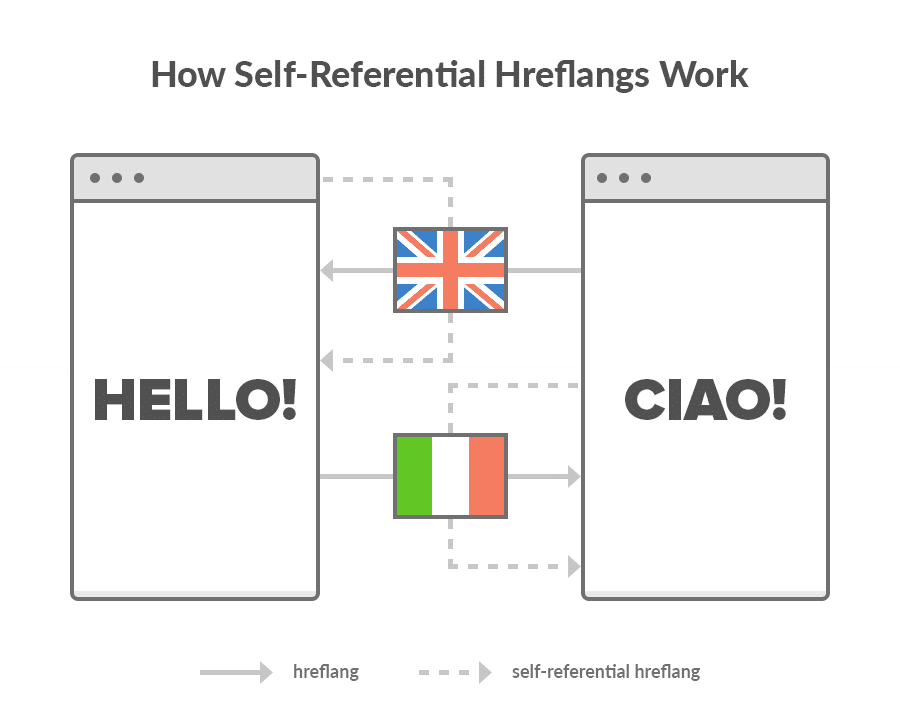In today’s global marketplace, having a strong international SEO strategy is essential for any business that wants to expand its reach and grow its customer base.
However, implementing SEO tactics across multiple languages and regions can be a complex process, and mistakes can lead to significant consequences, such as lost traffic and rankings. That’s where hreflang tags come in – a powerful tool that helps search engines serve the right version of your pages to users based on their language and location.
In this post, we’ll take a deep dive into hreflang tags and provide a complete guide to implementing them correctly to maximize your SEO strategy.

What Are Hreflang Tags?
Hreflang tags are HTML attributes that tell search engines which language and location version of a page to serve to users based on their language and location. By implementing hreflang tags on your website, you can ensure that users are directed to the correct version of a page, based on their preferred language and location. This improves the user experience, boosts rankings, and prevents duplicate content issues.
For example, if your website has pages in both English and Spanish, you can use hreflang tags to tell search engines which version of the page to serve to users who speak English or Spanish. This ensures that users see content in their preferred language and helps search engines understand which version of the page to index and rank.
How Do Hreflang Tags Work?
Hreflang tags work by providing search engines with information about the language and location of a page. When a user searches for a query in a particular language or location, search engines will use hreflang tags to determine which version of a page to serve to that user.
For example, if a user in Spain searches for “buy shoes online,” search engines will use hreflang tags to serve the Spanish version of a page that has been optimized for that query. If a user in the United States searches for the same query, search engines will serve the English version of the page optimized for the US.
By providing search engines with this information, hreflang tags ensure that users see content in their preferred language and location, leading to better engagement and higher conversion rates.
Implementing Hreflang Tags Correctly
Implementing hreflang tags correctly is essential to ensure that your international SEO strategy is effective. Here are the steps to follow to implement hreflang tags correctly:
Step 1: Identify the Language and Region Versions of Your Pages
The first step in implementing hreflang tags is to identify the language and region versions of your pages. For example, if you have pages in English, Spanish, French, and German, you’ll need to identify the language and region versions of each page.
Step 2: Implement Hreflang Tags on Your Pages
Once you’ve identified the language and region versions of your pages, it’s time to implement hreflang tags on your pages. Here’s how to do it:
- Add the hreflang attribute to the head section of each page’s HTML code.
- Use the correct language and region codes for each version of the page.
- Include all language versions of the page in the hreflang tag.
Here’s an example of what an hreflang tag might look like:
<link rel=”alternate” hreflang=”es” href=”https://www.example.com/es/page.html”>
This hreflang tag tells search engines that the page is available in Spanish and can be found at the URL https://www.example.com/es/page.html.
Step 3: Verify Your Hreflang Tags
After implementing hreflang tags, it’s important to verify that they’re working correctly. You can use Google’s Search Console to verify your hreflang tags and ensure that search engines are correctly serving the right version of your pages to users based on their language and location.
To verify your hreflang tags in Google Search Console:
- Navigate to the “International Targeting” report under the “Search Traffic” section.
- Click on the “Language” tab to view the language and region versions of your pages.
- Check for any errors or issues with your hreflang tags.
- Make any necessary updates or corrections to your hreflang tags.
By verifying your hreflang tags and ensuring that they’re working correctly, you can prevent any issues with duplicate content and ensure that your pages are ranking in the correct language and region versions.
Best Practices for Hreflang Tags
To maximize the effectiveness of your hreflang tags, here are some best practices to follow:
- Use the correct language and region codes: Be sure to use the correct language and region codes for each version of your pages. Incorrect codes can lead to errors and confusion for search engines and users.
- Include all language versions: Include all language versions of your pages in your hreflang tags to ensure that search engines understand which version to serve to users.
- Implement hreflang tags on all pages: Implement hreflang tags on all pages of your website, including subdomains and alternate versions, to ensure that users are directed to the correct version of a page.
- Use a self-referencing hreflang tag: Use a self-referencing hreflang tag to ensure that each page links back to itself with the correct hreflang tag. This can help prevent issues with duplicate content.
- Avoid using automatic translation: While it may be tempting to use automatic translation tools, they can often produce inaccurate translations and lead to issues with duplicate content. Instead, use professional translation services or create unique content for each language version of your pages.
Implementing hreflang tags correctly is essential for any business looking to expand its international reach and improve its SEO strategy. By following the steps outlined in this guide and adhering to best practices for hreflang tags, you can ensure that search engines serve the right version of your pages to users based on their language and location, leading to better engagement, higher conversion rates, and increased visibility in search results.





